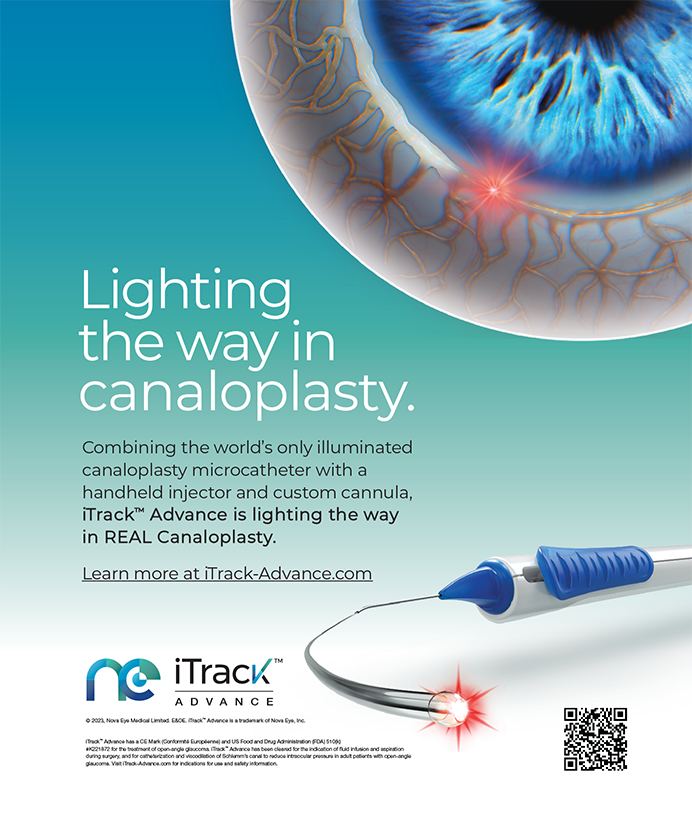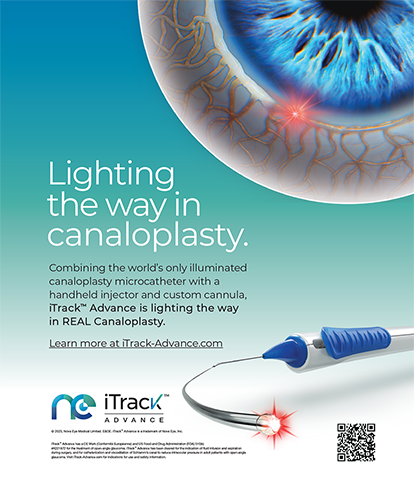The last several years have brought extensive exploration of different methods to incise the cornea. The first development was the transition from microkeratome blades to femtosecond lasers for the creation of LASIK flaps. Innovation progressed with the use of these lasers for corneal transplants, both penetrating keratoplasty and deep anterior lamellar keratoplasty, to create better interlocking of the tissue, greater surface area, and more structural stability in the incisions. My research colleagues and I first started with multiplanar cuts and then moved to more complex geometric patterns such as the zigzag incision. Positive results with corneal transplant incisions1-3 led us to hypothesize that the same principles could help to increase the structural stability of side-cut LASIK flaps.
Freed from limited possible cutting angles of the mechanical microkeratomes, ophthalmologists using the femtosecond laser had transitioned from angled to inverted incisions to create the corneal flap in LASIK. Although the incision’s inner diameter was still smaller than the epithelial surface diameter, we felt that a more vertical cut provided better quality and less epithelial ingrowth and that, overall, the flaps performed better.
CORNEAL BIOMECHANICS
Studies by John Marshall, PhD,4 regarding the biomechanics of the cornea have resulted in changes in surgical technique to address the root causes of ectasia. Specifically, Dr. Marshall discovered three important truths regarding corneal biomechanics. First, he found that the strongest area of the cornea is the midperiphery of 8 to 12 mm. Second, he demonstrated that the interior part of the cornea is progressively weaker than the surface, thus showing that thinner cuts are less destabilizing. Third, Dr. Marshall showed that 75% of the weakening in corneal biomechanics in refractive surgery comes from the side cut, not from the cuts to the lamellar bed.
Initially, the idea for an inverted side cut came from surgeons’ desire to improve the seating of the flap. If the flap were wider at the base than at the epithelial surface, the pocket shape would make it more secure, reduce the possibility of gaping, and lessen its impact on IOP. The pioneering technology of the Intralase iFS femtosecond laser (Abbott Medical Optics Inc., Santa Ana, CA) allows surgeons to make inverted cuts. Dr. Marshall’s initial studies reinforced the theories behind an inverted side cut, leading him to study the biomechanical impact on the cornea with this new cut.4 His subsequent research shows that, although there is still some weakening of the cornea, it is dramatically less when an inverted side-cut flap is created.
INVERTED SIDE CUT
Studies by Knorz and Vossmerbaeumer5 tested the grams of tension required to dehisce the corneal flaps created by the Amadeus microkeratome (Ziemer Ophthalmic Systems AG, Port, Switzerland) compared with standard side-cut angles created by the IntraLase iFS femtosecond laser. Almost 2.5 times the tension was needed to dehisce the latter group. Knorz then compared a group with 70° cuts to a group with 150° cuts (inverted side cut) and found that it was 1.5 times harder to dehisce the inverted side-cut group compared with the 70° side-cut group. This faster healing demonstrates that the flap regains some of its structural strength, thus contributing to the overall structural integrity of the cornea.
CONCLUSION
Overall, the biomechanics of the cornea are less affected by the inverted side cut. In addition, the flap settles into a pocket when it is reseated, providing additional stability. The inverted side cut is universally applicable for patients and, at this point, has no demonstrated downside. This improvement in the LASIK flap’s architecture is an advance for both science and patients.
Roger F. Steinert, MD, is the Irving H. Leopold professor and chair of ophthalmology, professor of biomedical engineering, and director of the Gavin Herbert Eye Institute at the University of California, Irvine. He is a consultant to Abbott Medical Optics, Inc. Dr. Steinert may be reached at (949) 824-8089; steinert@uci.edu
- Steinert RF,Ignacio TS,Sarayba MA.Top hat shaped penetrating keratoplasty using the femtosecond laser. Am J Ophthalmol.2007;143:689-691
- Farid M,Kim M,Steinert RF.Results of penetrating keratoplasty performed with a femtosecond laser zig-zag incision:initial report.Ophthalmology. 2007;114:2208-2212.
- Farid M,Steinert RF,Gaster RN,et al.Comparison of penetrating keratoplasty with a femtosecond laser zig-zag incision versus conventional blade trephination.Ophthalmology.2009;116:1638-1643.
- Marshall J.Kelman Innovator Lecture.Paper presented at:The American Society of Cataract and Refractive Surgery Annual Meeting;April 2008; Chicago,Illinois.
- Knorz MC,Vossmerbaeumer U.Comparison of flap adhesion strength using the Amadeus microkeratome and the Intralase iFS femtosecond laser in rabbits.J Refract Surg.2008;24:875-878.


